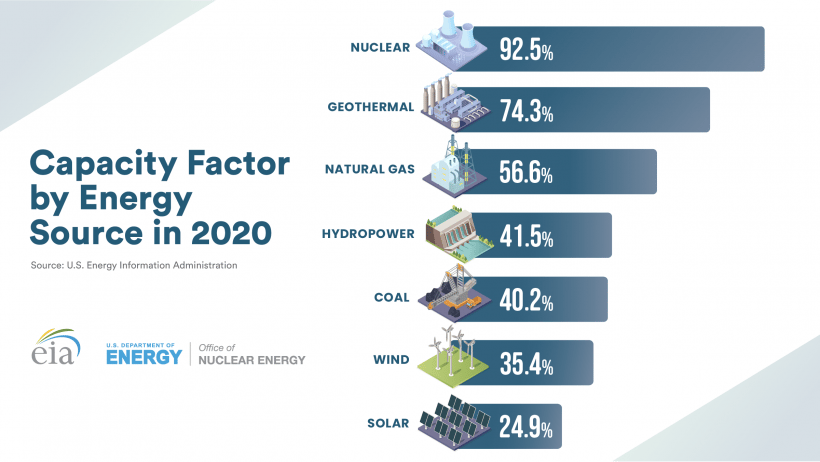If Bill Gates is wrong, I don’t want to be right
The promise of easy-to-build, low-carbon, reliable power is too good to pass up
UNCONVENTIONAL WISDOM
There’s a new guy here at Compass. No, not Bill Gates. Tony Grayson came to Compass in 2021, having served for two decades in the Navy with responsibility for four nuclear-powered submarines. He’s a big champion for nuclear power and its potential data center applications.
At the end of October, Bill Gates’ company, TerraPower, announced plans to conduct a feasibility study on five next-gen nuclear reactors, even as the initial demonstration plant in Wyoming is under construction to the tune of $4 billion, with $1 billion of that coming from the U.S. Department of Energy (DOE).
There is a lot of energy and funding pouring into nuclear power and we, as an industry, would be well-served to take heed.
On a smaller scale, small modular reactors (SMRs) hold a lot of promise for data centers. SMRs under development represent a variety of sizes and technology options, varying in size from 10- to 100-plus MW. They have a small physical footprint, and their templated designs will be helpful in terms of expediting permitting, approvals, and installations. On the financial side, nuclear power offers greater long-term price stability compared to renewable power, which is not only variable but is in high demand, pushing up prices.
Last August, the U.S. Nuclear Regulatory Commission certified NuScale’s small modular reactor for use in the U.S. following a seven-year study that found the design to be safe. The NRC approval is for a 600-MW design composed of 12 50-MW modules. This specific installation reactor is expected to go online at an Energy Department laboratory in Idaho in 2029.
Rolls-Royce SMR has set a seemingly aggressive goal of being able to provide 20% of the U.K.’s grid energy by 2050, a welcome commitment after a hot summer and amid a war that’s impacted all of Europe’s energy supplies. Over the summer, the company was selecting sites for manufacturing facilities.

Nuclear power plants produce so much more power than other sources of energy because they require less maintenance and can operate for longer stretches of time.
But what about safety?
For this to work, we must address the immense fear around safety and waste disposal when it comes to nuclear. We can all quickly name three reasons why fear has thwarted development of nuclear energy: Three Mile Island, Chernobyl, and Fukushima. These incidents loom large in our memories.
In reality, nuclear is far safer to use than many existing power sources, like coal, for example. Much progress has been made on the safety of nuclear reactors since Fukushima in 2011, and certainly Chernobyl almost 40 years ago, with lower risk designs, different coolants, and reactors that reduce or eliminate production of dangerous gases that have the potential to explode. We can expect safety measures to continue to continually be improved as SMR’s move toward commercial availability.

Another reason nuclear power plants out produce the others is because they aren’t dependent on whether conditions.
With regard to waste, new technology is more efficient, meaning refueling cycles are fewer and farther between, and there’s less waste to contain. SMR manufacturers are aiming for three to seven years between refueling, whereas many existing nuclear power plants require refueling every one to two years. Because of the smaller amount of fuel required and the longer operating life, SMR spent fuel is more manageable with on-site storage inside the containment reactor vessel.
The promise of easy-to-build, low-carbon, reliable power is too good to pass up. We need to get serious about exploring SMRs at data centers. How can we scale and make the technology affordable? Because, from where I’m sitting, this feels like a nice direction to be pointed in.
Chris Crosby
Chris Crosby is founder and CEO of Compass Datacenters. He has more than 25 years of technology, real estate, and investment experience. He received a bachelor's degree in computer science from the University of Texas at Austin. He currently serves as the vice chair of the board for the master’s in data center systems engineering degree program at Southern Methodist University and is also active in the Lonestar chapter of the Young Presidents’ Organization (YPO).


